China is deploying its largest navy fleet in regional waters in nearly three decades, posing a threat to Taiwan that is more pronounced than previous Chinese war games, the Ministry of National Defense said today.
Speaking in Taipei, ministry spokesperson Sun Li-fang (孫立方) said the scale of the current Chinese naval deployment in an area running from the southern Japanese islands down into the South China Sea was the largest since China held war games around Taiwan ahead of 1996 Taiwanese presidential elections.
China's military has yet to comment and has not confirmed it is carrying out any exercises.
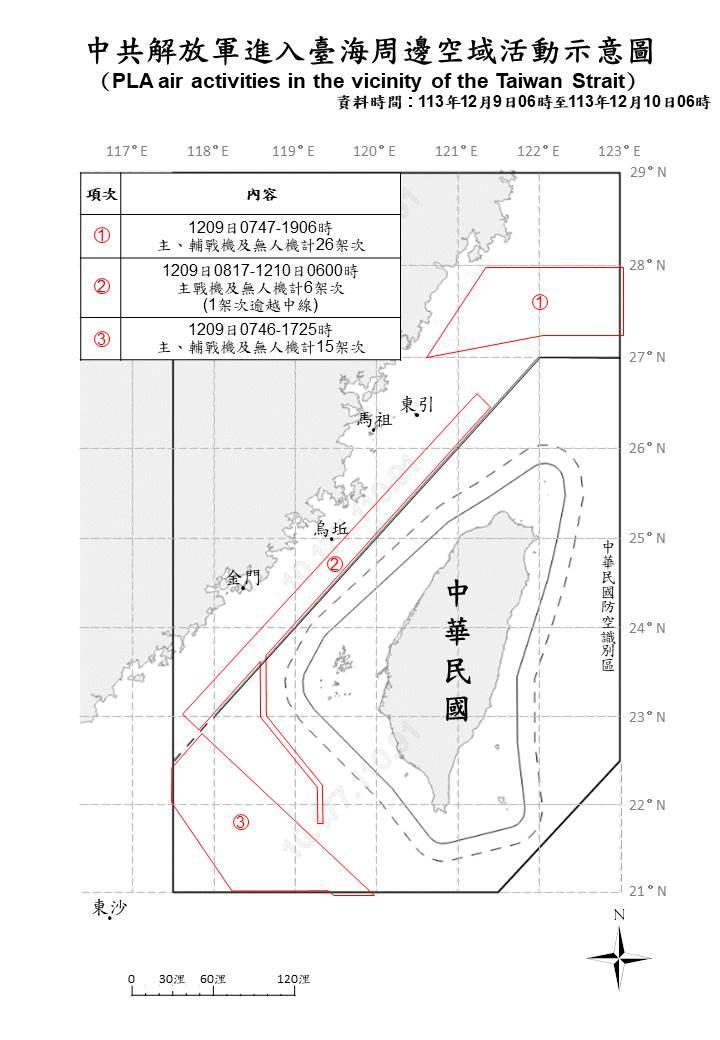
Photo provided by the Ministry of National Defense
"The current scale is the largest compared to the previous four [exercises around Taiwan]," Sun said. "Regardless of whether they have announced drills, they are posing a great threat to us."
Senior ministry intelligence officer Hsieh Jih-sheng (謝日升) told the same news conference there have so far been no live-fire drills in China's seven "reserved" airspace zones, two of which are in the Taiwan Strait, but there had been a significant increase in Chinese activity to the north of Taiwan over the past day.
The number of China navy and coast guard ships in the region, which a Taiwan security source told Reuters remained at around 90, was "very alarming," and China was taking aim at other countries in the region and not only Taiwan, he added.
China's deployment in the First Island Chain — which runs from Japan through Taiwan, the Philippines and on to Borneo, enclosing China's coastal seas — is aimed at area denial to prevent foreign forces from interfering, Hsieh said.
The ministry said China's navy is building two "walls" in the Pacific, one at the eastern end of Taiwan's air defense identification zone and the other further out in the Pacific.
"They are sending a very simple message with these two walls: trying to make the Taiwan Strait an internal sea" of China, Hsieh said.
Earlier today, the ministry said it detected 47 military aircraft operating around the nation over the past 24 hours, as well as 12 navy vessels and nine "official" ships, which refers to vessels from ostensibly civilian agencies such as the coast guard.
Of the aircraft, 26 flew in an area to the north of Taiwan off the coast of China's Zhejiang Province, six in the Taiwan Strait and a further 15 to the nation's southwest, according to a map the ministry provided in its daily morning statement on Chinese activities.
A senior Taiwan security source told Reuters that the Chinese aircraft simulated attacks on foreign naval ships and practiced driving away military and civilian aircraft as part of a "blockade exercise."
China has held two rounds of major war games around Taiwan so far this year.
If China holds another military exercise, it would be viewed as coercive behavior which would be counterproductive in terms of diplomacy, Heino Klinck, former deputy assistant secretary of defense for East Asia, told CNA today.
The Chinese People’s Liberation Army (PLA) is extending its scale and coverage of military drills every time, which is a way of numbing Taiwan and its allies, he said.
“Normalizing” its military exercises would arouse less attention and could affect Taiwan and its allies’ judgement and shorten their reaction time if an actual invasion happens, he said.
The US is closely monitoring the PLA’s activities around Taiwan, a spokesperson of the US Department of State said today.
The department called for restraint and said China should avoid taking any actions that could destroy regional peace and stability in the Taiwan Strait.
President William Lai’s (賴清德) transit in US territory during his tour of Pacific allies last week should not be an excuse for exerting military pressure on Taiwan, it said.
China is angry because of Lai’s stopovers in Hawaii and Guam during his Pacific tour, former US Navy rear admiral Mark Montgomery said.
Montgomery, senior director of the Center on Cyber and Technology Innovation of the Washington-based think tank the Foundation for Defense of Democracies, said the PLA was expected to hold military exercises this winter.
It is worrying that the PLA’s drills have become larger and more complicated and directly threaten Taiwan’s security, he said.
These drills are intended to convey strategic messages to the Taiwanese and create opportunities for training the PLA, he said while calling on the US and Taiwan to continue to promote their bilateral relationship in suitable ways.
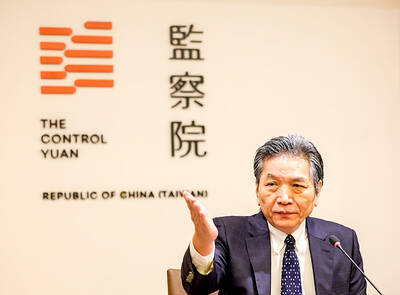
‘ABUSE OF POWER’: Lee Chun-yi allegedly used a Control Yuan vehicle to transport his dog to a pet grooming salon and take his wife to restaurants, media reports said Control Yuan Secretary-General Lee Chun-yi (李俊俋) resigned on Sunday night, admitting that he had misused a government vehicle, as reported by the media. Control Yuan Vice President Lee Hung-chun (李鴻鈞) yesterday apologized to the public over the issue. The watchdog body would follow up on similar accusations made by the Chinese Nationalist Party (KMT) and would investigate the alleged misuse of government vehicles by three other Control Yuan members: Su Li-chiung (蘇麗瓊), Lin Yu-jung (林郁容) and Wang Jung-chang (王榮璋), Lee Hung-chun said. Lee Chun-yi in a statement apologized for using a Control Yuan vehicle to transport his dog to a
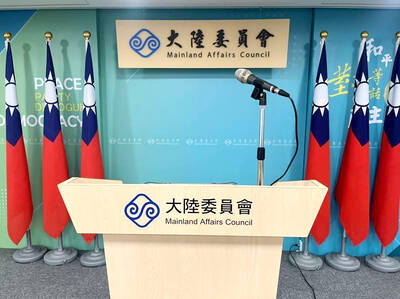
BEIJING’S ‘PAWN’: ‘We, as Chinese, should never forget our roots, history, culture,’ Want Want Holdings general manager Tsai Wang-ting said at a summit in China The Mainland Affairs Council (MAC) yesterday condemned Want Want China Times Media Group (旺旺中時媒體集團) for making comments at the Cross-Strait Chinese Culture Summit that it said have damaged Taiwan’s sovereignty, adding that it would investigate if the group had colluded with China in the matter and contravened cross-strait regulations. The council issued a statement after Want Want Holdings (旺旺集團有限公司) general manager Tsai Wang-ting (蔡旺庭), the third son of the group’s founder, Tsai Eng-meng (蔡衍明), said at the summit last week that the group originated in “Chinese Taiwan,” and has developed and prospered in “the motherland.” “We, as Chinese, should never
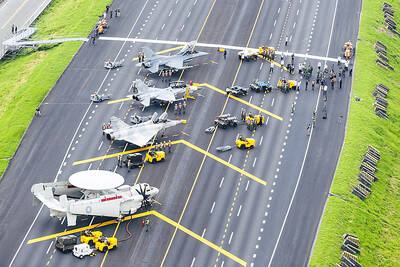
‘A SURVIVAL QUESTION’: US officials have been urging the opposition KMT and TPP not to block defense spending, especially the special defense budget, an official said The US plans to ramp up weapons sales to Taiwan to a level exceeding US President Donald Trump’s first term as part of an effort to deter China as it intensifies military pressure on the nation, two US officials said on condition of anonymity. If US arms sales do accelerate, it could ease worries about the extent of Trump’s commitment to Taiwan. It would also add new friction to the tense US-China relationship. The officials said they expect US approvals for weapons sales to Taiwan over the next four years to surpass those in Trump’s first term, with one of them saying
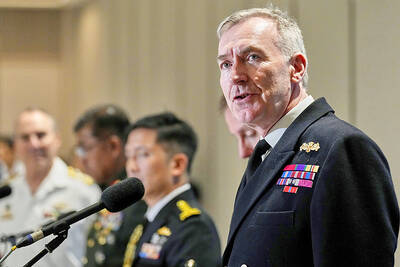
INDO-PACIFIC REGION: Royal Navy ships exercise the right of freedom of navigation, including in the Taiwan Strait and South China Sea, the UK’s Tony Radakin told a summit Freedom of navigation in the Indo-Pacific region is as important as it is in the English Channel, British Chief of the Defence Staff Admiral Tony Radakin said at a summit in Singapore on Saturday. The remark came as the British Royal Navy’s flagship aircraft carrier, the HMS Prince of Wales, is on an eight-month deployment to the Indo-Pacific region as head of an international carrier strike group. “Upholding the UN Convention on the Law of the Sea, and with it, the principles of the freedom of navigation, in this part of the world matters to us just as it matters in the